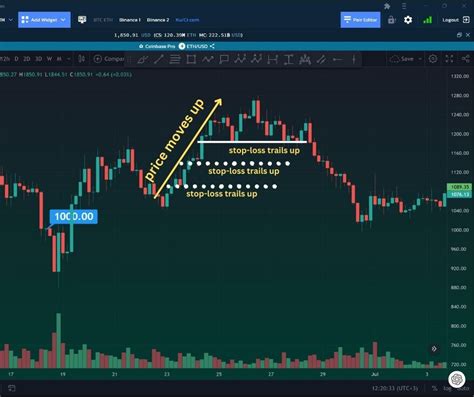“Stop Loss in the Cryptocurrency Market: Risk Regulation with Trading Platforms and New Technologies”
The crypto market has experienced tremendous growth and volatility in recent years, making it a high-risk investment opportunity for traders and investors. With the increasing popularity of cryptocurrencies such as Bitcoin, Ethereum, and others, the need for regulation and control measures has become more urgent.
Stop Loss Mechanism: A Vital Protection
One effective way to manage risk in the crypto market is to use stop loss mechanisms. This is a pre-set price level that serves as a barrier to limit potential losses when a trader’s investment rapidly declines. For example, if a trader buys Bitcoin for $50,000 and its price drops to $40,000, he can set his stop loss order to sell 20% of the trade before taking any further action.
In the case of trading platforms, many providers have implemented stop loss features that allow users to set custom stop loss orders based on the performance of the investment. For example, some popular crypto trading platforms such as Binance and Kraken offer a range of stop-loss options, including percentage-based and fixed stop-loss settings.
Regulating Risk with New Technologies
In addition to implementing stop-loss mechanisms, traders can benefit from new technologies aimed at regulating risks in the crypto market. One notable example is the use of artificial intelligence (AI) and machine learning (ML) algorithms to analyze market data and identify potential risks.
For example, some trading platforms have developed AI-powered risk management tools that use natural language processing (NLP) and computer vision techniques to detect patterns and anomalies in market data. These tools can help traders identify potential security risks, such as insider trading or market manipulation, and take proactive measures to mitigate them.
The Role of NFTs
Another exciting development in the crypto space is the rise of non-fungible tokens (NFTs). Unlike cryptocurrencies like Bitcoin, which are fungible and fungible, NFTs are unique digital assets that represent ownership and provenance. The use of NFTs has opened up new opportunities for traders, artists, and collectors to create and own rare digital content.
For example, some popular NFT marketplaces such as OpenSea and Rarible have emerged, offering a platform for artists, musicians, and other creators to showcase their work and earn royalties. While the NFT space is still in its infancy, it has shown tremendous promise as a new frontier for innovation and creativity.
Conclusion

Regulating risk in the crypto market requires a multi-pronged approach that combines traditional risk management techniques with cutting-edge technologies such as AI and ML. By implementing stop-loss mechanisms, utilizing trading platforms with robust regulatory features, and embracing new NFT-based opportunities, traders can better protect themselves from potential losses and seize opportunities for growth.
As the crypto market continues to evolve, it is critical for regulators and policymakers to stay ahead of the curve by adopting innovative solutions that prioritize investor protection while fostering innovation and growth.
